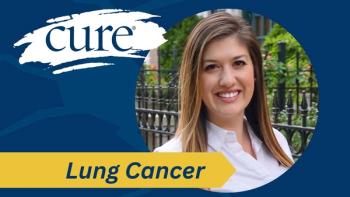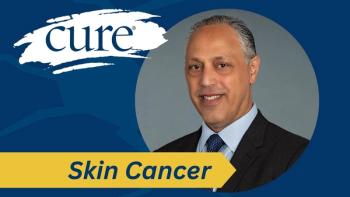
Hear My Voice: Advocating For Cancer Care and Research
Martha Carlson talks about what it's like to join a group of active advocates for stage 4 breast cancer
“Advocate” is a word I hear a lot: Advocate for my own best medical care, advocate for a better education for my kids, advocate for a better community. I’m not a natural advocate, though. My voice shakes when I speak at Board of Education meetings, I really don’t want to press my doctors, I’d rather be anywhere than a village meeting where I know I’ll be saying something.
So, I surprised myself when I eagerly accepted a friend’s suggestion that I contact Living Beyond Breast Cancer (LBBC) about being a member of their Hear My Voice Outreach Volunteer Program. Hear My Voice (HMV) is designed to help metastatic breast cancer patients learn how to share information about the disease and the resources available through LBBC, and just generally make noise about what it means to live with a stage 4 diagnosis in a world that believes breast cancer is a “good” cancer.
I joined the program in late April, where 26 of us (25 women and 1 man, all with metastatic breast cancer) took part in training during LBBC’s annual conference in Philadelphia. I’d met women with metastatic disease before, but I was unprepared for the number of women at the conference, many of whom — like me at the moment — you’d never guess were the slightest bit ill. And then there were my “classmates”—a vocal, determined, focused and sometimes angry bunch. Women and “our” man who wanted to do something about the disparity in research funding for metastatic breast cancer, who weren’t afraid to “say something” to politicians about medical care, a filmmaker, an artist, numerous writers, a minister, a world traveler, young moms and grandmothers.
The conference and training were busy, loud and interesting. But the real work began when I got home. Inspired by these advocates, I felt that maybe I could become one as well. I’ve shared information about LBBC resources with people at my hospital and at an area conference on breast cancer, I’ve written essays about my experience with metastatic breast cancer and I haven’t shied away from speaking out about the relative lack of research money.
As anyone who’s ever joined a group that wants to get something done, it’s no surprise that I’ve also made these women (and one man, J) a part of my daily life through social media. I get their Facebook posts, I like their tweets, I want to know they are doing OK, and when they’re not I want to know that, too.
Because sometimes they are not OK. Metastatic breast cancer is not chronic, it is deadly. Many women and men live for years, but that’s not the norm, even with the treatments we can string together over time. Since the end of April, five of my fellow 2017 HMV advocates have died from metastatic breast cancer. All of them were “warriors,” all of them had family who loved them, they were positive and active people.
I went into HMV thinking the hardest part of the program would be doing the work of sharing information. I was wrong. The hardest part has been losing those women and knowing that more are likely to follow. You can’t always tell who is struggling, you don’t know what quirk in care or individual tendencies will put an end to treatment.
Losing them has made me want to reach out more. Every day is another chance to express love, care, concern for each other and, for me, keeping silent in the face of this diagnosis and with these friends and the others I have made through HMV is not an option.
Today, the remaining 21 of us are flooding social media with information. We are using the #KnowStageIV hashtag, remembering the women we’ve lost, and trying to let this pink world see the full spectrum of breast cancer. Join us by visiting http://www.lbbc.org/know-stage-iv




